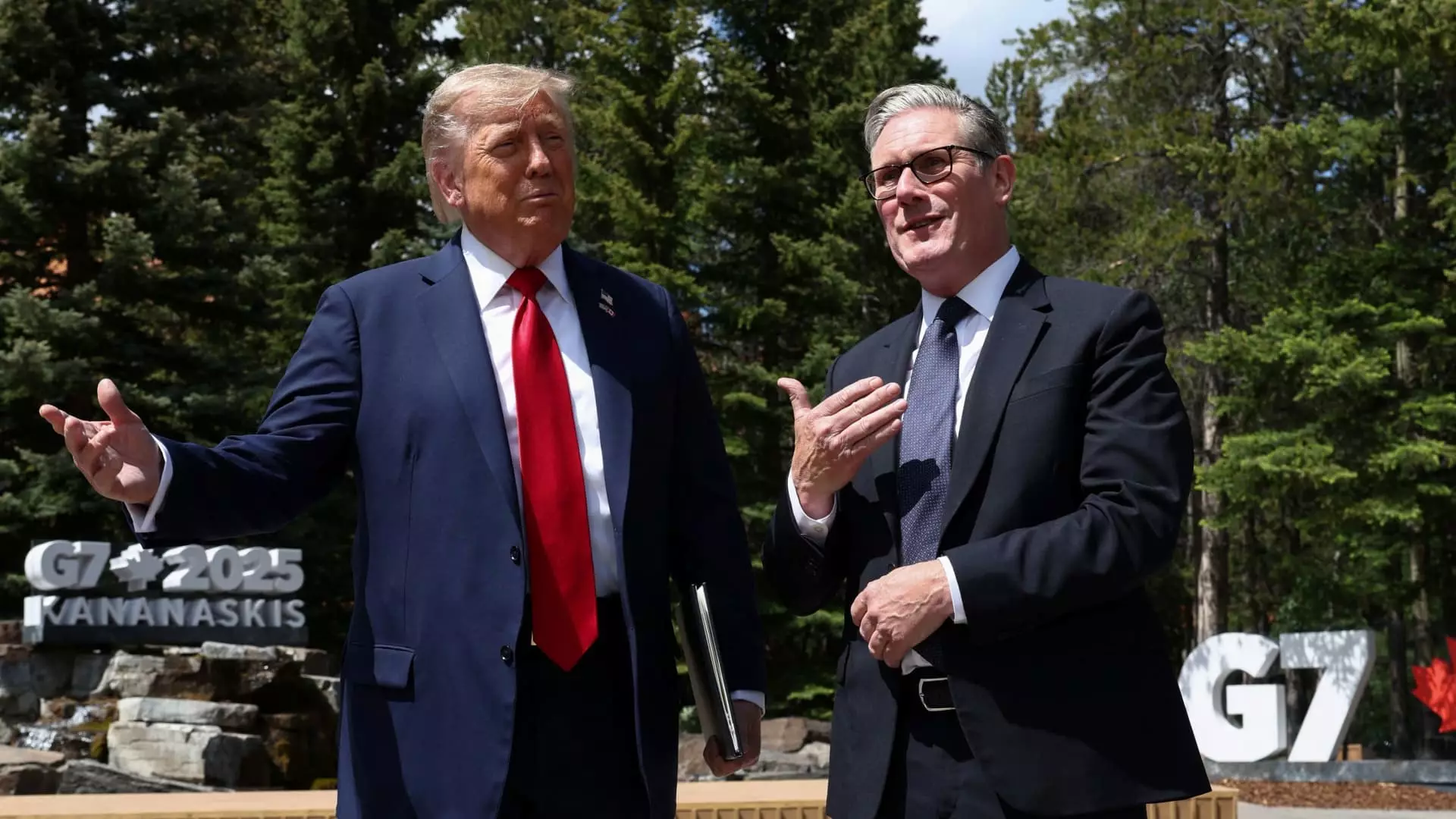The recent agreement signed between U.S. President Donald Trump and British Prime Minister Keir Starmer has been touted as a significant milestone in UK-US relations, largely framed as a triumph for both nations. However, upon a deeper examination, what emerges is a picture fraught with unresolved issues and a precarious balance of power that leaves one questioning the long-term sustainability of this so-called trade deal.
The Surface of Diplomacy
Trump proclaimed that relations with Britain were “fantastic,” yet his casual dismissal of a signed document speaks volumes about the depth of commitment to this agreement. It raises concerns that the transaction may amount to little more than a public relations exercise. The elimination of tariffs on the aerospace sector and reaffirmation of quotas for British automobiles sound promising at first. However, once we peel back the layers, we confront a reality where essential industries, such as pharmaceuticals, remain untouched, leaving significant gaps in trade policy that could invite chaos.
The Incomplete Picture
While Trump swept us into a whirlwind of optimism regarding lower tariffs on British imports, the unresolved status of steel and aluminum imports looms large. What good is a trade deal if pivotal industries are left dangling in uncertainty? The notion that the U.S. will impose quotas conditioned upon Britain’s compliance regarding its steel supply chain is indicative of a power struggle rather than a collaborative partnership. In essence, Britain finds itself needing to continuously prove its worth, navigating a labyrinth of American demands.
Starmer hailed the agreement as “a very good day,” but such proclamations ring hollow when the agreement itself is akin to standing on quicksand. The complexities and contingencies tied to steel and aluminum tariffs effectively undermine the jubilant rhetoric of this “accomplishment.” This imbalance speaks to the larger challenges inherent in bilateral trade relationships, which are often littered with conflicting interests and progressive demands.
Automobiles and Beyond
The fate of British car manufacturers appears slightly less precarious with the establishment of a quota for 100,000 cars at a significantly reduced tariff rate. However, this is merely a patch on the larger fabric of trade policy. By defining favorable terms for specific industries, the agreement raises the question: is this truly a win for Britain, or just a temporary reprieve? The steady pursuit for preferential treatment creates a dangerous precedent—one that places the UK as a client rather than an equal partner in trade.
Additionally, while this prioritization of auto trade is commendable, it feels painfully thin when considering the broader economic landscape. Pharmaceutical access, a vital sector for Britain’s economy, remains relegated to future negotiations, placing the industry in unprecedented jeopardy. If the historical mistrust between the two nations is any indication, one must wonder how long the UK can enjoy this temporary good fortune.
A Game of Best Interests
The aspect of reciprocity is another facet where the fragility of this agreement shines through. The UK is only guaranteeing access to a minuscule quantity of beef—with significant restrictions hinging on American standards. This ultimately puts more pressure on British producers rather than fostering a fair exchange of goods. If this deal reflects the best interests of both parties, it surely raises the question of who exactly is benefiting most from this agreement.
Thus, it is crucial to scrutinize the motivations behind this trade deal. While the UK painted a hopeful picture for future negotiations, the reality may be more complicated. Britain’s eagerness to secure trade agreements with the U.S. appears to blind them to the inherent asymmetric nature of their negotiations. Trade Secretary Jonathan Reynolds’ declaration about aiming for “significantly preferential outcomes” sounds encouraging but highlights a critical concern: the reliance on future negotiations and goodwill from a notoriously capricious U.S. administration.
The United Kingdom’s Future in Trade
As we emerge from this agreement, the ultimate question remains unanswered: Does this trade deal signal a new dawn of cooperation, or is it simply the gilded veneer over a less stable reality? The trade agreement, while serving some purpose, ultimately reinforces a relationship built largely on transactional power dynamics rather than authentic partnership. The UK must find its footing in these discussions, jagged and uncertain as they may be, or risk becoming merely a pawn in a larger geopolitical chess game.


Leave a Reply